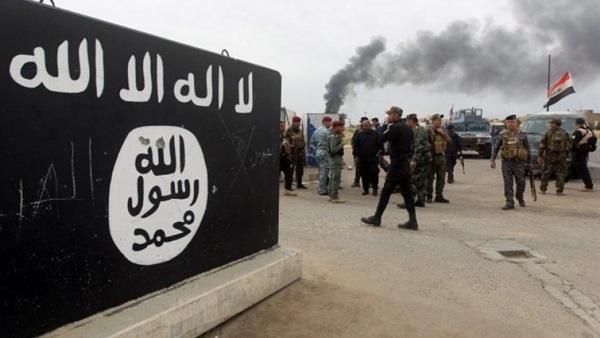The future of global terrorism after the collapse of ISIS

On June 29, 2014, the global political map changed.
Suddenly, large parts of Syria and Iraq were cut off and combined under the
pretext of establishing the Islamic State caliphate. ISIS claimed an area as
big as a country the size of Great Britain. But the terrorist group’s control
of vast territory in Iraq and Syria was not the greatest threat to the world.
The greatest threat is represented in the generational development
that affects the terrorist phenomenon. After the terrorists were hiding in the
caves of Tora Bora in Afghanistan and the valleys of the Sahara in North Africa,
they now have a full-fledged state with rich agricultural and oil resources,
posing a potential threat to all the nations of the world under the ISIS calls
to expand its so-called state, invade Europe and conquer Rome.
In August 2014, an international coalition was formed with
the participation of dozens of international and regional countries. The
alliance aims to eliminate ISIS and purge Syria and Iraq from the clutches of
the terrorist organization. It took nearly three years for the coalition
countries to declare the defeat of ISIS. On December 9, 2017, former Iraqi
Prime Minister Haider al-Abadi announced Iraq’s victory in the war against ISIS
and the liberation of most Iraqi territory from the clutches of the terrorist
organization.
Now, one year after the declaration of victory over ISIS,
questions are still being asked about the future of the terrorist phenomenon, at
the heart of which is ISIS. In an article published on the Rand Corporation
website, American writer Colin P. Clarke pointed out that the phenomenon of
world terrorism awaits many possible scenarios.
Continued vitality of terrorist organizations
Despite nearly two decades of global counterterrorism
campaigns launched by the United States and its allies after the September 11,
2001 attacks, the world's terrorist population has quadrupled since 2001, with
a total of 230,000 fighters now deployed in some 70 countries, with the lion’s
share in Syria, Afghanistan and Pakistan.
The increase in figures comes at the same time as the
collapse of ISIS in Iraq and Syria, as it now controls only 1 percent of the
land it once controlled in 2014-2015. These figures indicate that, despite the
decline of ISIS, the terrorist phenomenon is still alive and vibrant, even if
it is more dispersed and more fragmented than ever before.
Changing organizational priorities
Terrorist organizations may completely abandon the idea of
a distant enemy and focus more on the idea of a close enemy. They are
likely to become more localized by attacking local targets.
Eliminating the terrorist phenomenon
Another possible scenario is the total defeat and
elimination of the terrorist phenomenon due to counterterrorism efforts such as
tightening borders, increasing the exchange of information, intelligence
cooperation, and accelerated technological advances that support
counterterrorism efforts. Using biometrics and integrating artificial
intelligence into the targeting process can help Western armies be more
effective and discriminatory in their pursuit of terrorist leaders hiding in
rugged terrain. Another aspect of this future possibility is that the intellectual
narratives of terrorist organizations become bankrupt, intellectually
contradictory, and unaccepted by future generations.
Rise of al-Qaeda
Sectarian strife between Sunnis and Shiites could lead some
Islamist forces to become more tolerant of al-Qaeda and even sponsor it as an
alternative force. Al-Qaeda will be in a good position to receive this kind of
support since it has been reshaping its image as a more moderate entity following
the Arab Spring, which many parties have been trying to promote. For example,
Qatar and Turkey have promoted the Nusra Front as the most moderate wing of al-Qaeda.
Recently, al-Qaeda has worked in many parts of the world to provide momentum
and popular support to grassroots movements embracing it, which can be continued
in the future and help avoid any strikes that would eliminate the organization.
Finally, there is no certainty about any of the previous
scenarios. Analysts had previously predicted that al-Qaeda would disappear
twice: after the United States declared its global war on terrorism and after
the death of Osama bin Laden. These scenarios have been renewed again with
successive losses faced by ISIS in Syria and Iraq. However, all these
predictions lack an important dimension: the strong momentum of terrorist
organizations due to their rhetoric, which could enable them to absorb major
shocks and reshape themselves again.





